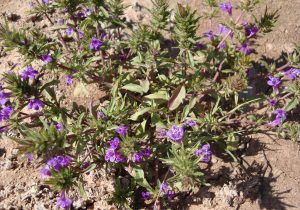VERNAL POOL PRESERVATION PROJECT
Rare Chaparral Wetlands to Benefit from Conservation Partnership
Vernal pools are one of California’s most endangered wetland natural communities. The Conservancy has entered into a partnership with the Center for Biological Diversity to carry out proactive, non-political advocacy activities to improve the conservation status of San Diego area vernal pools.
Rare Chaparral Wetlands to Benefit from Conservation Partnership
Vernal pools are one of California’s most endangered wetland natural communities. The Conservancy has entered into a partnership with the Center for Biological Diversity to carry out proactive, non-political advocacy activities to improve the conservation status of San Diego area vernal pools.

Vernal pools are one of California’s most endangered wetland natural communities and many of the Conservancy’s projects are focused on restoring degraded vernal pool areas and their watersheds for the benefit of imperiled pool plants and animals. Over 97% of California’s vernal pools have been destroyed by development, agriculture, and off-road vehicles among other impacts. Many remaining vernal pools are degraded by edge effects from these activities such as exotic weed invasions, wildlife collecting, trash dumping, and more. Because of this, the Conservancy has entered into a partnership with the Center for Biological Diversity to carry out proactive, non-political advocacy activities to improve the conservation status of San Diego area vernal pools.

Vernal pools are a special and fascinating type of ephemeral wetland found in remnant patches throughout California’s Mediterranean climate areas on flat coastal mesas and inland valleys. Vernal pools support many unique plants and animals that have evolved to tolerate and even thrive in extreme environmental conditions ranging over the course of a season from a fully submerged aquatic environment during the rainy winter and spring to a totally dry and sun baked environment in the summer and fall.

Just a few short days after pools fill, fairy shrimp and a soup of other tiny freshwater crustaceans hatch from eggs that have lain dormant in the dry pool basins and swim in search of microscopic food and mates. Soon after, toads and frogs emerge from nearby summer hiding places to begin their wet season chorus of love and tiny plants germinate from floating seeds. Eggs laid by toads and frogs hatch into tadpoles which in turn eat many of the little crustaceans, garter snakes swim in search of snack-size amphibians, and migrating water fowl rest and dabble. Over weeks pool waters recede, tadpoles emerge as frog and toadlets, and plants that once grew underwater transform to withstand drying, bloom, and set seed. Fairy shrimp eggs, some of which have passed through the guts of tadpoles, settle to the bottom of pools, bake through the summer, and await transformation with next year’s winter rains.

In southern California, seven wildlife and plant species have been formally recognized as endangered by state and federal agencies: Riverside fairy shrimp, San Diego fairy shrimp, California Orcutt’s grass, little mousetail, Otay Mesa mint, San Diego mesa mint, and spreading navarretia. Several other species are also rare but have no formal government protection: Two-striped garter snake, Western spadefoot toad, and toothed calico flower.
The Conservancy is actively engaged in several vernal pool restoration and enhancement projects. In an effort to provide much-needed additional habitat for the rarest vernal pool species, some Conservancy projects include the creation of new basins in suitable soils and in proximity to original natural vernal pools. However, these new “vernal pool species habitats” should be recognized as different from “original natural vernal pool habitat” because wetland ecosystems are extraordinarily complex and cannot be created from scratch by people. There is significant value in creation of new vernal species habitat and perhaps new habitat created by the Conservancy will evolve to support complex wetland ecosystems over many years. But the creation of new pool species habitat should in no way be considered a substitute for the crucial preservation of original natural vernal pools. For more information on vernal pools visit VernalPools.org or Wikipedia.
For more information on preserving vernal pools, please contact us.
This project has been made possible through the generous support of the Center for Biological Diversity.
